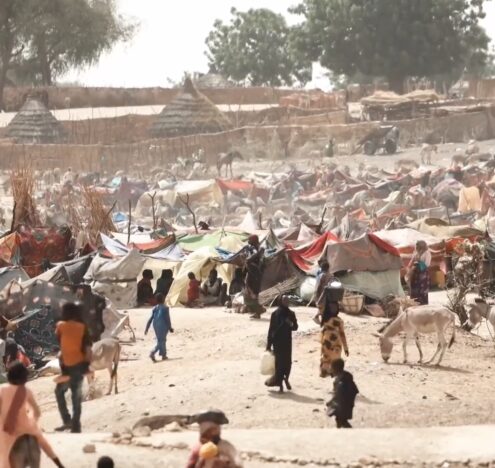Only a few days into 2020 and here we are: #WorldWarIII. Recent developments between the US and Iran have created a fear of nuclear war we have not seen since the 1980s. And while the future remains uncertain, it is important to understand that we are not helpless in changing the course of history.
In June 1982, one million people rallied in New York City to demand an end to the nuclear arms race. That same month, at the United Nations Second Special Session on Disarmament, then Mayor Takeshi Araki of Hiroshima called for cities around the world to join together for nuclear abolition. Subsequently, Hiroshima and Nagasaki established “The World Conference of Mayors for Peace through Inter-City Solidarity,” composed of mayors around the world who formally expressed support for this call. And in 2001, the newly-branded “Mayors for Peace” announced its 2020 Vision Campaign seeking to eliminate all nuclear weapons by 2020.
In short, this is a crucial year. And not just because recent events have made painfully clear that it is time for renewed progress toward the Mayors’ 2020 goal.
THE POTENTIAL FOR CHANGE
Regardless of what happens with the impeachment trial, there will be a presidential election in November. Due to pressure from activists and arms control advocates, the issue of “No First Use” has been discussed in Democratic primary debates and at individual events with candidates. Bernie Sanders and Elizabeth Warren have publicly committed to a “No First Use” policy and were either to win the presidency and follow through, the US would see a monumental shift in nuclear policy writ large. The next president will decide if the US and Russia will extend the New START Treaty, which will expire in just over a year, and what path the US will take with regard to Iran. We must choose wisely.
BUILDING ON CURRENT SUCCESS
Outside of US leadership, the Treaty on the Prohibition of Nuclear Weapons currently needs just sixteen more countries to ratify and it will officially enter into force. When the atomic bombs were dropped in August 1945, few would have thought that 75 years later we would be on the verge of having a ban on all nuclear weapons in the United Nations. However, this is exactly what can happen if we continue to work on achieving this extraordinary goal.
There is a reason that the fight to abolish nuclear weapons is called a movement and not a moment. For 75 years, people have joined together, regardless of race, gender, or religion to eliminate nuclear weapons, and because of these actions the world has been safer. It is because of the anti-nuclear movement that the Partial Nuclear Test Ban Treaty, INF Treaty, START Treaty, Iran Nuclear Deal, and others were adopted. Presidents have always had to be pushed on these fronts and we have achieved important victories in this regard.
CHANGE ISN’T EASY
Now we stand at a pivotal point. Between recent developments with Iran and North Korea, the 75th anniversary of the atomic bombings, the looming expiration of New START, and only a year to realize the 2020 vision of a world without nuclear weapons, the time is ripe for a large, intersectional, antinuclear movement to take shape. This is the year in which advocates for nuclear disarmament must put forth a bold agenda to educate, organize, and pursue substantial change — from grassroots organizing and mass rallies to the ballot box and the United Nations.
Today’s advocates stand on the shoulders of many who fought for nuclear disarmament, most importantly the hibakusha (atomic bomb survivors). We owe it to the countless victims of nuclear testing, including the atomic veterans, to make 2020 the year of nuclear disarmament. And while the reality is that we will not eliminate all nuclear weapons in one year, the strength of the antinuclear movement has always been its fight for future generations. If, by our collective action throughout this year we can make the world a little safer and decrease the threat of nuclear war, then we must look at that as a victory, build on it, and continue to fight for a day in which nuclear weapons are truly a thing of the past. I, for one, am ready and hopeful to see what the future holds.
Dr. Vincent Intondi is a professor of history and author of African Americans Against the Bomb. He is currently writing a book which examines the June 12, 1982 nuclear disarmament rally in Central Park.





















